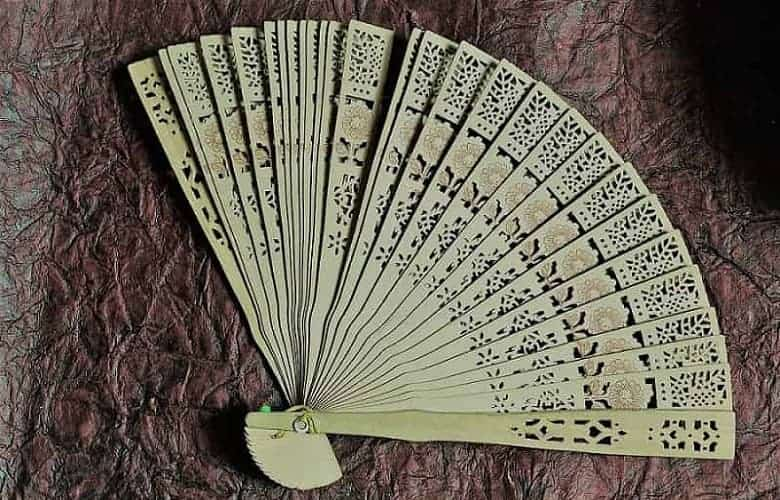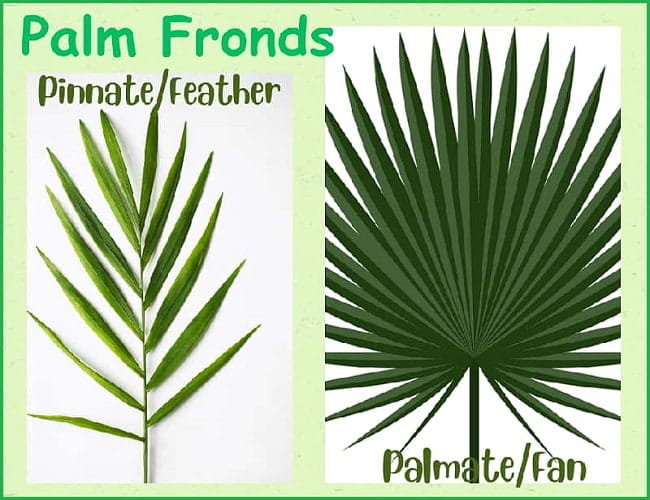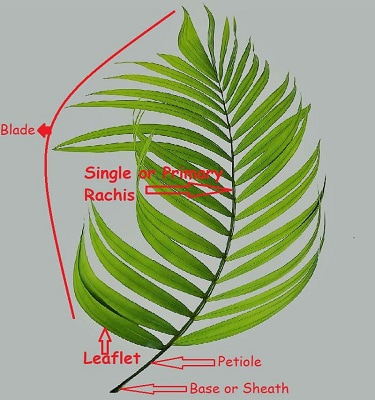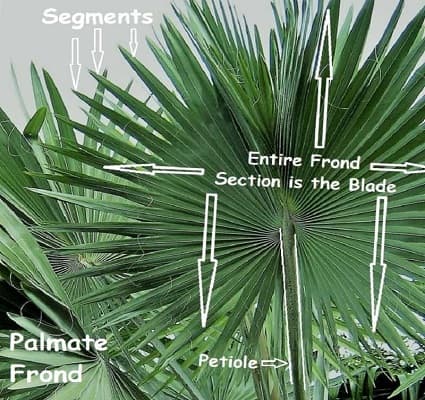- Home
- Palm Physique
- What Are Fronds?
- Palm Frond Parts
Parts of a Palm Frond
Have you wondered about the different parts of a palm frond?
Our fundamental visual guide takes you through the anatomy of the parts of a palm frond. We go from the base to the tip. To show you the each area's part. An overview to help you get what they are and their names.
You'll find out how each is needed for this wonderful palm plant's structure.
Feeling overwhelmed by so many palm trees?
You're not alone. We Understand your headaches! At Mission: Palm Trees you'll find clear answers to questions & Step-By-Step Guidance, from real people. With solutions to help. No puzzling shoptalk. No tiring research. So it's easy & fun for you.
Visual Guide to the Parts of a Palm Frond
Want to understand the anatomy of a palm frond?
Plus the essential terminology. To help with puzzling out these complicated palm plants. And figure out if there's a Problem With Your Palm Tree by how the fronds are looking.
That can be useful for gardeners or landscapers who must care for, or want to Grow Palm Trees.
Palm fronds enable palm trees to provide some shade. Plus they add tropical beauty to yards, gardens and parks. Good to know when you're thinking of Planning Your Own Palm Landscaping.
There are more than 2500 species of palms throughout the world. Nearly all have one of these two main Types of Palm fronds.
Was this among The Palm Facts you knew?
Palm Fronds Definition
Simply put the Definition of a Palm Frond, is a palm tree leaf. But there are several different types.
Palm Pinnate Leaves
This type of palm frond is probably the more common of the two frond types. Pinnate frond is the scientific name.
But it's often called a Feather Palm. As you may have noticed, it has this nickname because the structure is reminiscent of a bird's feather.
Palm Palmate Leaves
Palmate Frond is the scientific name.
This type of palm frond is quite popular. Much of the time it's referred to as a Fan Palm. One reason is it does look like a fan. The type of hand-held fan you unfold, to fan your face on a hot day!
Yet, it's also suggestive of the palm of your hand. That's likely where its scientific name originated. Put up you hand with your fingers straight up, and it's similar in shape to a Palmate Frond.
Do these shapes remind you of palm fronds?
 Comparing Palmate Fronds to Drawn Green Hands Showing Palms and Upright Fingers
Comparing Palmate Fronds to Drawn Green Hands Showing Palms and Upright Fingers Comparing Pinnate (Feather) Fronds to Bird Feathers
Comparing Pinnate (Feather) Fronds to Bird Feathers Comparing Palmate (Fan) Fronds to Hand Fan
Comparing Palmate (Fan) Fronds to Hand Fan
Explaining Parts of the Palm Leaf
EASIEST PARTS TO KNOW
First thing is knowing that all leaf types of Palms Have Specific Parts of a frond in common. They have certain main forms found in them all.
THREE COMMON PARTS TO ALL PALM FRONDS
SHEATH:
Also sometimes called the Leaf Base. It has tough inner fibers that help the frond avoid damage. Kind-of like "crazy gluing it" - by anchoring the leaf to the trunk. This gives it stability & support through windy times.
STEM:
Scientifically called the petiole. It connects the green blade of the leaf to the trunk or branch of the palm. Acting like the frond's support beam. It gets water & nutrients coming up from the roots to the frond's blade.
The petioles of some species have thorns. They're called spines when they're on palms.
BLADE:
It's what you typically think of as the leaf part of a palm frond. It's the expanded greenish area. Also called the lamina.
Most are divided into those two common types of leaves: Fan (palmate) or Feather (pinnate).
They capture sunlight for the process of photosynthesis. Which changes light energy with the air's CO2 into food the palm needs.
Feather Palm Parts
 This Rachis is Single
This Rachis is SingleBecause Some Pinnates Have Secondary Rachis
RACHIS:
The central supporting vein or stem of the pinnate frond.
Technically that comes off of, or it's an extension of the petiole. It supports the structure of the leaf or frond. It also continues bringing water to the frond's green mass to support food production.
PINNAE:
Often called leaflets.
The smaller leaves within the blade of a pinnate frond. They attach to the rachis. If you refer to a single leaflet, the term is pinna.
Fan Palm Parts
PETIOLE:
This part of a palmate frond ends where the blade begins its expansion.
In some species a small knob called a hastula is at the petiole's end. That's helpful for palm tree identification, sorting out one from another.
Another thing to note. In some species, the petiole actually extends into the blade to varying degrees. These are called Costapalmate Fronds.
SEGMENT:
The ending tip of the blade. From where it divides from the main part of the blade.
 Like the hand of a palm -
Like the hand of a palm -Segments are like fingers on the palm.
What are Palm Fronds' Other Uses?
Palm fronds are commonly amidst the tropical and subtropical regions of the earth.
Many people love them for their unique and beautiful appearance. But even more-so for their useful features. Like...
- Making thatched roofs
- Creating crafting baskets & hats
- Being useful for a wide assortment of palm decor
Their ability to Grow in Many Other Places, also makes them a further attraction.
Did you know that Palm Fronds Themselves have symbolic meanings?
- Check Out the Symbolism of Palm Fronds>
We have even more detail about palm fronds! Like using their looks for palm tree identification!
For Even Better Understanding
Get the Illustrated Guide to All Frond Parts for Free
When You're on Our Ezine List for: The Palm Species Navigator
Newest Palm Article
-
Backyard Palm Tree Ideas Make Your Space Feel Like a Tropical Escape
Bring a resort feel home. Explore inspiring backyard palm tree ideas with themes like clustering, layering, and lighting designs for any space.
Parts of a Palm Frond Takeaways
Palms typically have large leaves made up of several different parts. Each with its own function. It's important to know the vocabulary & understand its inner workings. Knowing the parts of a palm frond is an exciting, interesting trip!
We hope we helped you make sense of the anatomy of a palm frond. Which can help you appreciate the beauty and complexity of these plants even more. Plus it helps you when you're discussing palm trees with others. Or if you're a home gardener, helping when you think about Buying a Palm of your own, for planting.
Have you been helped here? Did you find what you needed? But as always, if you want, you can always Contact Us to Ask Any Questions or give us feedback - and we'll help you out as best we can!





